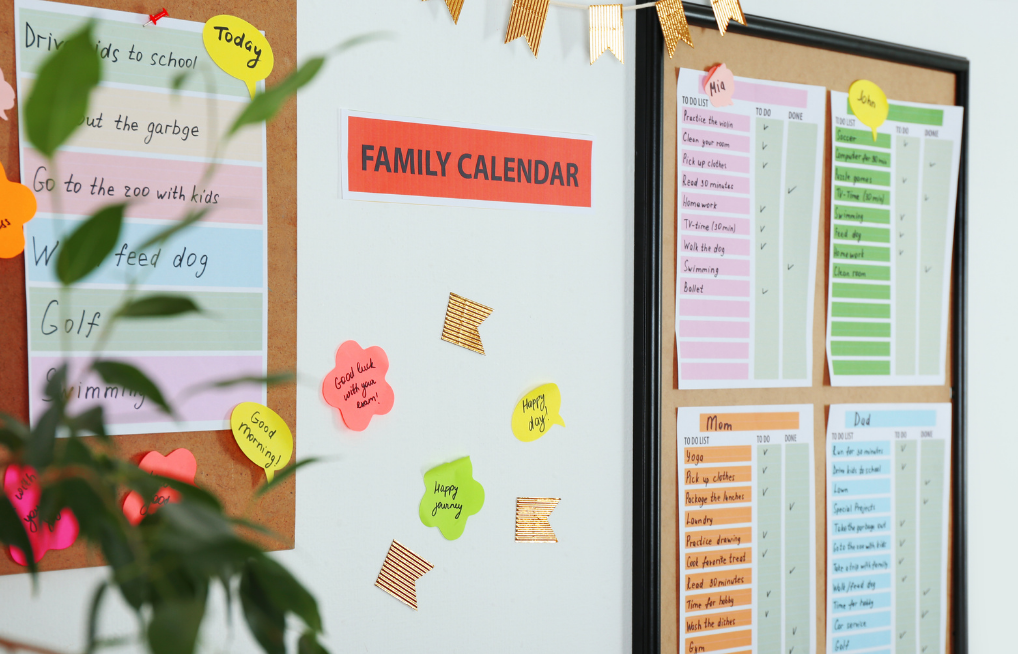Recognizing Inattentive ADHD: The 5 Most Overlooked Signs and Helpful Tips for Living with Them
 Inattentive ADHD is one of three types of ADHD (hyperactive-impulsive and combination are the other two types). It is often characterized by difficulties in keeping focused, staying organized and following directions or conversations. These experiences may lead to a sustained pattern of losing things, careless mistakes, and mental fatigue. Unfortunately, these issues are often misunderstood as defiance, lack of comprehension, lower intelligence or laziness. But instead, inattentive ADHD interferes with daily functioning and contributes to increased levels of frustration and lower self-esteem. Therefore, it’s important to be able to recognize signs of inattentive ADHD in a person of any age–kids and teens, for integrated support at an early age, but also adults who remain undiagnosed or misdiagnosed. So let’s dive into understanding the inattentive ADHD diagnosis and experience, with a focus on five easy-to-miss signs and recommended tips to help you live easier with them.
Inattentive ADHD is one of three types of ADHD (hyperactive-impulsive and combination are the other two types). It is often characterized by difficulties in keeping focused, staying organized and following directions or conversations. These experiences may lead to a sustained pattern of losing things, careless mistakes, and mental fatigue. Unfortunately, these issues are often misunderstood as defiance, lack of comprehension, lower intelligence or laziness. But instead, inattentive ADHD interferes with daily functioning and contributes to increased levels of frustration and lower self-esteem. Therefore, it’s important to be able to recognize signs of inattentive ADHD in a person of any age–kids and teens, for integrated support at an early age, but also adults who remain undiagnosed or misdiagnosed. So let’s dive into understanding the inattentive ADHD diagnosis and experience, with a focus on five easy-to-miss signs and recommended tips to help you live easier with them.
Inattentive ADHD: Understanding the diagnosis
According to the DSM-5, a diagnosis of inattentive ADHD requires 6 or more symptoms of inattention in children up to age 16, and 5 or more symptoms for ages 17 or older. Symptoms such as difficulty listening, staying focused, or remembering things among others must present for 6 months or longer and differ from expected behaviors for peers of the same age. Common symptoms also include dreaminess, forgetfulness and difficulty paying attention to details. These issues must be chronic or long-lasting and not due to a situational influence or “one-off” experiences. Stress, sleep issues, anxiety and depression or other physical illness can all negatively affect attention and need to be ruled out with a professional evaluation before receiving an inattentive ADHD diagnosis.
Inattentive ADHD vs. non-ADHD inattention
 Many people experience varying amounts of inattention in the course of their lives, but for folks with ADHD, inattention is more severe, lasts longer and negatively impacts their ability to perform well at work or school. It also interferes with how well they function socially, due to missing facial cues or parts of conversations. Because symptoms may change over time, and because there’s a wide range between mild/occasional inattention and a diagnosable issue, some signs of inattentive ADHD are easy to miss. The following are the 5 most overlooked signs of inattentive ADHD, as well as some strategies for managing them.
Many people experience varying amounts of inattention in the course of their lives, but for folks with ADHD, inattention is more severe, lasts longer and negatively impacts their ability to perform well at work or school. It also interferes with how well they function socially, due to missing facial cues or parts of conversations. Because symptoms may change over time, and because there’s a wide range between mild/occasional inattention and a diagnosable issue, some signs of inattentive ADHD are easy to miss. The following are the 5 most overlooked signs of inattentive ADHD, as well as some strategies for managing them.
1. Difficulty completing tasks
Finishing projects, chores or homework often reflects a lack of focus or interest but has nothing at all to do with intelligence, laziness or disobedience. Instead, sticking with a task until it’s completed reflects a true difficulty with attending to the work at hand, quickly reaching brain fatigue. and struggling with goal-oriented persistence. Low motivation for uninteresting tasks creates further obstacles and adds another layer of complication for getting things done.
TIPS:
These strategies help both children and adults who struggle with sustained focus and perseverance:
- Try chunking tasks by breaking them down into small pieces. If it’s still difficult to begin or pursue, then the task needs to be even smaller.
- Establish specific timed work periods with built-in timed breaks based on how long your child (or you) can concentrate before becoming distracted.
- Identify a preferred order of doing tasks. Is it starting with something easy to get going, then doing the hard thing and finishing with medium one? What tasks or subjects are easy, medium or hard?
2. Forgetfulness
Working memory challenges often result in missed appointments or meetings, turning in work or forgetting to do a chore or run an errands. They also make follow-through more difficult resulting in issues with showing up for school, personal or professional responsibilities. Ashamed and embarrassed, people who wrestle with forgetfulness may be labeled as ‘stupid,’ ‘uncaring’ or ‘irresponsible’ when they struggle with biologically-based problems with recall.
TIPS:
 Instead of judging your memory challenges, accept them and engage supports:
Instead of judging your memory challenges, accept them and engage supports:
- Use technology tools like alarms, notifications, texting, as well as post-its and to-do lists as reminders.
- Consider putting a laminated note in a backpack to remind your child or teen of what needs to be there.
- Use cues such as family calendars or daily responsibility lists/charts to guide kids and trigger their memory for what to do next. This also helps with improving organization and planning.
3. Spaciness/distractedness
With an inattentive ADHD brain, you are easily pulled to think about something other than the task at hand. This is a common occurrence. Perhaps you get distracted by a “new shiny object,” the snow drifting outside of your window, or squeaking noise of the heater in your office. Your child may drift off into thoughts about lunch or playing a video game during their math exam. This tendency for distractedness makes it tougher to stay on point and complete the activities of daily living, homework or job responsibilities. Plus, many people with inattentive ADHD may process information more slowly than they actually comprehend it, making them feel perpetually behind and overwhelmed. It takes longer to sort through and digest information.
TIPS:
Slow things down and allow extra time for completing tasks:
- Improve accountability by using lists and reminders. Set alerts or banners to flash across your phone, iPad or computer to help you stay on task (or find an app to do this for you).
- Practice mindfulness with family (or individual) meditation or yoga to increase awareness about where attention is and where it is not.
- Create a coping strategy for the return from a mental drift to avoid panic and shame.
4. Trouble listening and/or following directions
 Following instructions or tracking conversations can be tough for many kids and adults with inattentive ADHD. Whether there’s an auditory processing issue, a working memory challenge or information overload, when someone is talking (visual, sensory and sound), it may seem like someone isn’t listening, doesn’t respond appropriately or can’t stay present. They may drift off and then ask “what?” or say ”yes” when no one asked a question. Paying attention in a class or meeting and being expected to take notes simultaneously may seem impossible with words and sentences omitted and replaced by doodles. These are not willful, oppositional behaviors, but rather signs that someone cannot effectively process or retain information.
Following instructions or tracking conversations can be tough for many kids and adults with inattentive ADHD. Whether there’s an auditory processing issue, a working memory challenge or information overload, when someone is talking (visual, sensory and sound), it may seem like someone isn’t listening, doesn’t respond appropriately or can’t stay present. They may drift off and then ask “what?” or say ”yes” when no one asked a question. Paying attention in a class or meeting and being expected to take notes simultaneously may seem impossible with words and sentences omitted and replaced by doodles. These are not willful, oppositional behaviors, but rather signs that someone cannot effectively process or retain information.
TIPS:
- Use “The Rule of 3” when giving instructions to make sure you’ve been heard and understood. Repetition helps information move down the memory line and become imbedded.
- Set up mandated academic and ADA work supports, such as a note-taker, pre-recorded lectures or written copies of presentations and lessons. This makes listening about hearing what is said instead of adding another task such as writing to it.
- In a social situation, ask a buddy who understands ADHD and the tendency to drift to help with focus and fill in the gaps about something you missed.
5. Disorganization
If you lose your keys or misplace a report or homework assignment, you are not alone. Difficulty keeping track of stuff is a frequent indicator of inattentive ADHD. When someone struggles with disorganization, they often feel overwhelmed, embarrassed and confused. Figuring out where to begin the process of categorizing, cleaning and tidying up can seem insurmountable, akin to climbing Mt. Everest.
TIPS:
 Follow my father’s golden rule: Everything has a place. This used to drive me crazy as a kid but now I see the wisdom of his ways. Make a place for things and create organizational systems that you or your child can actually follow. Keep these simple, straightforward and logical to the ADHD brain. It may not make sense to anyone else, and that’s fine!
Follow my father’s golden rule: Everything has a place. This used to drive me crazy as a kid but now I see the wisdom of his ways. Make a place for things and create organizational systems that you or your child can actually follow. Keep these simple, straightforward and logical to the ADHD brain. It may not make sense to anyone else, and that’s fine!- Create regular routines with specific steps for cleaning a bedroom or tidying up the living room, write them down and post them on the refrigerator. Don’t rely on recall/memory to kick in and direct the show.
- Use incentives to provide motivation if necessary. Consider setting aside a particular time of day or day of the week just for organization, such as an evening clean sweep after dinner or a Saturday morning bedroom clean-up.
Read more blog posts:
- ADHD Misconceptions: How to respond to 4 damaging false beliefs and assumptions about ADHD
- The Truth about ADHD in Girls, and 5 Ways You Can Help
- Celebrate ADHD Awareness Month by Accepting the Wonderful Uniqueness of Living with ADHD
Watch on Dr. Saline’s YouTube Channel:
- How Do I Support My Daughter with ADHD? | ADHD Q&A with Dr. Saline
- Help Your Kid Overcome School Anxiety | Operation Parent Webinar with Dr. Saline
- How to Deal with & Educate ADHD Doubters | ADHD Q&A with Dr. Saline
